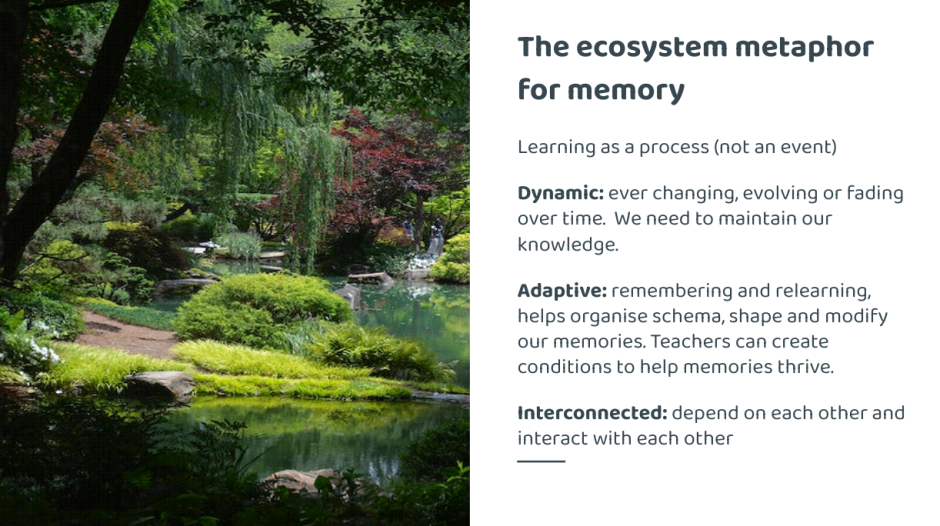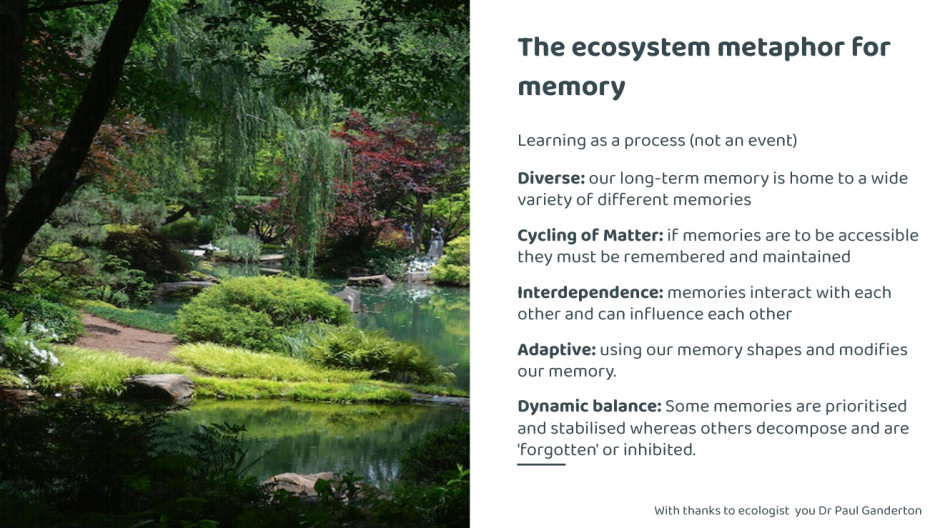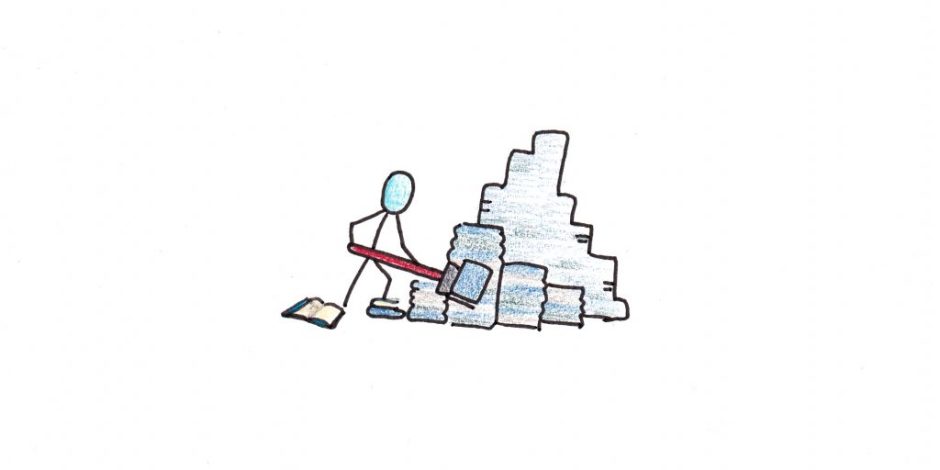The metaphor was largely Sarah Cottingham’s work. In presenting to TTCT I had developed the foundations of dynamic, adaptive and interconnected. After a first release there were a few questions and queries that led to a second draft.

This was the second final draft
My opening question to ecologist Dr Ganderton
We fill syllabi with content and forget that most of it is just going to cloud learning.
Dr Paul Ganderton
To improve my understanding and use of ‘ecosystems as metaphor for memory,’ I asked Dr Paul Ganderton, Geographer and Ecologist for his help. Little did I know, even ecologists borrowed the fantastic insights of Lewis Carroll’s ‘Alice in Wonderland.’
In ecosystems what survives/thrives/evolves? (Which memories survive/thrive and evolve?)
So, the “conditions,” are our pupil’s prior knowledge (that directs their perception) to which new information connects to?
Also, the environment might also be changing so you have a dynamic situation. Who wins now? Those species who were lucky enough to be born with the best survival mechanisms for the new conditions. Take a single species (I tend to use people in a simple case). There are those who could bathe in flu germs and not get a sniffle and those who sink just by seeing an advert for codril! (Codril Syrup is a combination medicine used in the treatment of dry cough.) It’s a normal curve with outliers being super-resistant or totally unfit. A new set of conditions arrives and those members of this species that are best suited, win and the others lose. So, evolution is the previous generations roll of the genetic dice (but of artistic licence here) before the new conditions come along.
Of course, that’s a single species. Now, two species might compete for similar resources. The best adapted for the new conditions gets the biscuit. The other one will also evolve and might win next round (or not). This gets even more fun if one is predator and one is prey. There’s an evolutionary arms race to see which one wins.
In competing “for similar resources,” are those “similar resources,” first our working memory and second, our investment in remembering and relearning.
…there’s constant adaptation and to find any chink in the other’s armour. That’s called the Red Queen Hypothesis from Alice in Wonderland where the red queen says she has to go faster and faster just to keep up!
So, both the Red Queen Hypothesis can be likened to theories of memory in that both involve a process of adaptation. In the Red Queen Hypothesis, species evolve in response to changes in their environment, enabling them to better survive in their given environment. Similarly, theories of memory suggest those memories that are “consciously processed,” or remembered or relearned, are constantly adapting in response to changes in our environment, enabling us to better remember information. Dynamic, adaptive and interconnected, modify existing knowledge in order to adequately respond to new information.
Dr Ganderton’s thinking and commentary, started to extend the metaphor, and the very scope of metaphor. I queried… “What of the attractiveness of the information in the first place?”
With consideration to Cognitive Load Theory, Dr Paul Ganderton added:
Let’s make a hypothesis – the most attractive, lowest-hanging fruit will gain the limited attention moments. It follows that we need to make our learning resources so attractive they get the reads. That alone is a huge can of worms and I’m not sure we’ve even started to address it.
Dr Paul Ganderton
As Sarah Cottingham contributed – the metaphor is beginning to hint at the ‘role of novelty, emotion, attention and inattention,’ too, however I think I am going to draw a line under it there.

Many thanks to Dr Ganderton @ecogeog – who has been so generous with his time and expertise.



